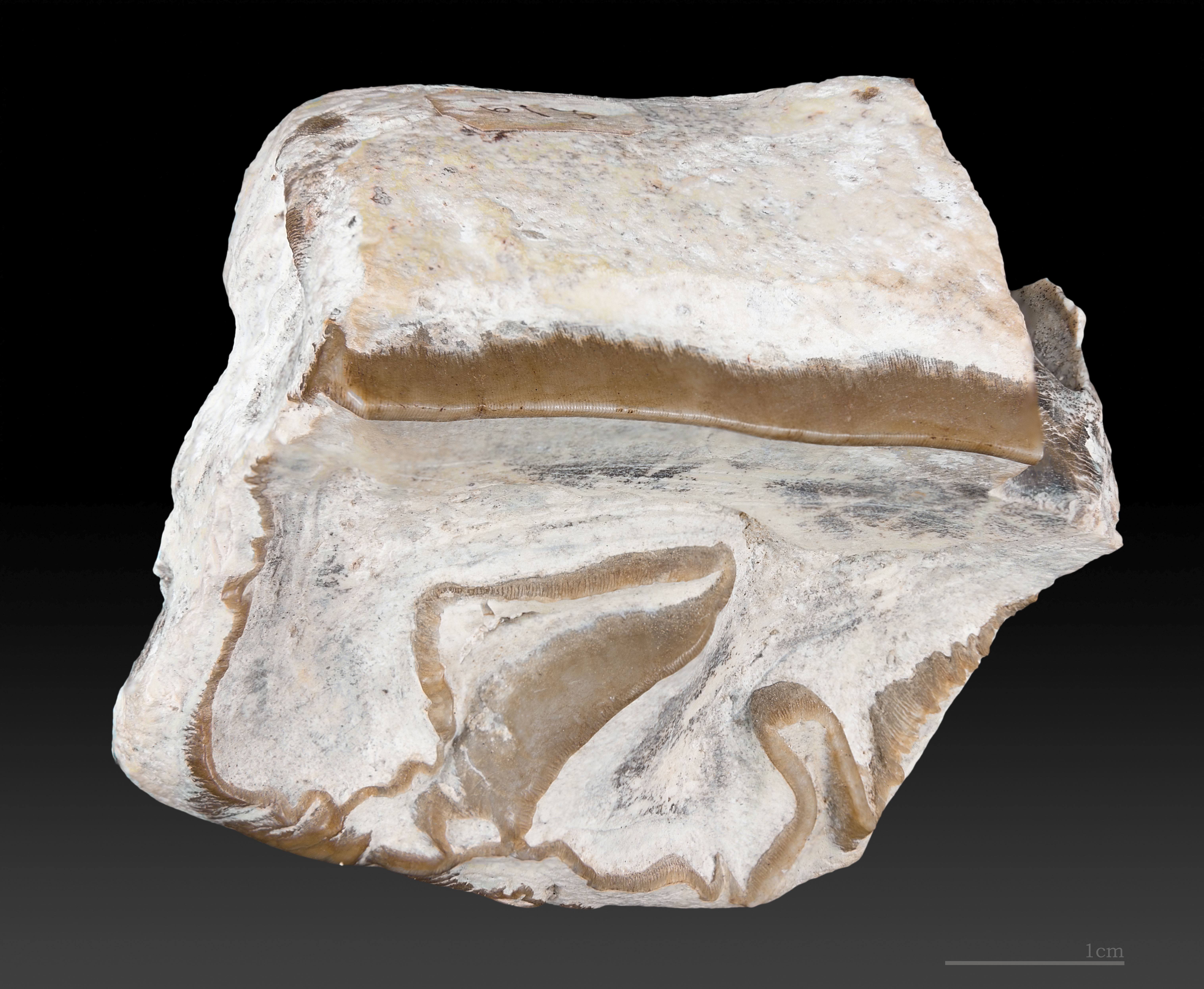|
Anasaitis Milesae
''Anasaitis milesae'' is a species of jumping spider (family Salticidae) that was first discovered in 2023 and formally described in 2024. It represents one of around 50 non-native spider species that have become established in Britain, likely facilitated by global warming providing an increasingly hospitable climate. History and systematics The species was discovered by students and members of the public during a "bioblitz" on the Penryn campus in Cornwall, England, home to the University of Exeter and Falmouth University. Immature and female spiders were first collected on 29 April 2023, adult males on 17 May 2023. It was confirmed as a new species and named by Russian arachnologist Dmitri Logunov of the Zoological Institute of the Russian Academy of Sciences, who was sent specimens by Cornwall's County Spider Recorder Tylan Berry. The specific name ''milesae'' honours Claire Miles (1958–2023), a former honorary curator at the Manchester Museum where the holotype is kept. Lo ... [...More Info...] [...Related Items...] OR: [Wikipedia] [Google] [Baidu] |
Dmitri Logunov
Dmitry (); Church Slavic form: Dimitry or Dimitri (); ancient Russian forms: D'mitriy or Dmitr ( or ) is a male given name common in Orthodoxy, Orthodox Christian culture, the Russian version of Demetrios (, ). The meaning of the name is "devoted to, dedicated to, or follower of Demeter" (Δημήτηρ, ''Dēmētēr''), "mother-earth", the Greek mythology, Greek goddess of agriculture. Short forms of the name from the 13th–14th centuries are Mit, Mitya, Mityay, Mit'ka or Miten'ka (, or ); from the 20th century (originated from the Church Slavic form) are Dima, Dimka, Dimochka, Dimulya, Dimusha, Dimon etc. (, etc.) St. Dimitri's Day The feast of the martyr Saint Demetrius, Saint Demetrius of Thessalonica is celebrated on Saturday before November 8 [Old Style and New Style dates, Old Style: October 26]. The name day (именины): October 26 (November 8 on the Julian Calendar) See also: Eastern Orthodox liturgical calendar. The Saturday before this is called Demetrius Sat ... [...More Info...] [...Related Items...] OR: [Wikipedia] [Google] [Baidu] |
Anasaitis Emertoni
''Anasaitis'' is a genus of jumping spiders (family Salticidae) that was first described by E. B. Bryant in 1950. The name is derived from the salticid genus ''Saitis''. Species , the World Spider Catalog accepted the following species: *'' Anasaitis adorabilis'' Zhang & Maddison, 2012 – Hispaniola *'' Anasaitis arcuatus'' (Franganillo, 1930) – Cuba *'' Anasaitis banksi'' (Roewer, 1951) – Hispaniola, Puerto Rico *''Anasaitis brunneus'' Zhang & Maddison, 2012 – Hispaniola *'' Anasaitis canalis'' (Chamberlin, 1925) – Panama, Colombia *'' Anasaitis canosus'' (Walckenaer, 1837) – USA, Cuba *''Anasaitis champetera'' Galvis, Zapata-M & Malumbres-Olarte, 2020 – Colombia *''Anasaitis cubanus'' (Roewer, 1951) – Cuba *'' Anasaitis decoris'' Bryant, 1950 – Jamaica *'' Anasaitis elegantissimus'' (Simon, 1888) – Hispaniola *'' Anasaitis emertoni'' (Bryant, 1940) – Cuba *''Anasaitis gloriae'' (Petrunkevitch, 1930) – Puerto Rico *'' Anasaitis hebetatus'' Zhang & Maddison, ... [...More Info...] [...Related Items...] OR: [Wikipedia] [Google] [Baidu] |
Paratype
In zoology and botany, a paratype is a specimen of an organism that helps define what the scientific name of a species and other taxon actually represents, but it is not the holotype (and in botany is also neither an isotype (biology), isotype nor a syntype). Often there is more than one paratype. Paratypes are usually held in museum research collections. The exact meaning of the term ''paratype'' when it is used in zoology is not the same as the meaning when it is used in botany. In both cases however, this term is used in conjunction with ''holotype''. Zoology In zoological nomenclature, a paratype is officially defined as "Each specimen of a type series other than the holotype.", ''International Code of Zoological Nomenclature'' In turn, this definition relies on the definition of a "type series". A type series is the material (specimens of organisms) that was cited in the original publication of the new species or subspecies, and was not excluded from being type material ... [...More Info...] [...Related Items...] OR: [Wikipedia] [Google] [Baidu] |
Glossary Of Spider Terms
This glossary describes the terms used in formal descriptions of spiders; where applicable these terms are used in describing other arachnids. Links within the glossary are shown . Terms A * Abdomen or opisthosoma: One of the two main body parts (tagma (biology), tagmata), located towards the Posterior (anatomy), posterior end; see also Abdomen#Other animals, Abdomen § Other animals * Accessory claw: Modified at the tip of the in web-building spiders; used with to grip strands of the web * Anal tubercle: A small protuberance (tubercule) above the through which the anus opens * Apodeme: see * Apophysis (plural apophyses): An outgrowth or process changing the general shape of a body part, particularly the appendages; often used in describing the male : see * Atrium (plural atria): An internal chamber at the entrance to the in female Haplogynae, haplogyne spiders B * Bidentate: Having two * Book lungs: Respiratory organs on the ventral side (underside) of the , in f ... [...More Info...] [...Related Items...] OR: [Wikipedia] [Google] [Baidu] |
Palpal Bulb
The two palpal bulbs – also known as palpal organs and genital bulbs – are the copulatory organs of a male spider. They are borne on the last segment of the pedipalps (the front "limbs" of a spider), giving the spider an appearance often described as like wearing boxing gloves. The palpal bulb does not actually produce sperm, being used only to transfer it to the female. Palpal bulbs are only fully developed in adult male spiders and are not completely visible until after the final moult. In the majority of species of spider, the bulbs have complex shapes and are important in identification. Structure The palpal bulb of a mature male spider is borne on the last segment of the pedipalp. This segment usually has touch-sensitive hairs (setae) with nerves leading to them. The bulb itself is entirely without nerves, and hence without sensory organs and muscles, since these depend on nerves for their functioning, although some spiders have one or two muscles external to the bulb and ... [...More Info...] [...Related Items...] OR: [Wikipedia] [Google] [Baidu] |
Carapace
A carapace is a dorsal (upper) section of the exoskeleton or shell in a number of animal groups, including arthropods, such as crustaceans and arachnids, as well as vertebrates, such as turtles and tortoises. In turtles and tortoises, the underside is called the plastron. In botany, a carapace refers to the hard outer cover of a seed which protects the inner embryo. Crustaceans In crustaceans, the carapace functions as a protective cover over the cephalothorax (i.e., the fused head and thorax, as distinct from the abdomen behind). Where it projects forward beyond the eyes, this projection is called a rostrum. The carapace is calcified to varying degrees in different crustaceans. Zooplankton within the phylum Crustacea also have a carapace. These include Cladocera, ostracods, and isopods, but isopods only have a developed "cephalic shield" carapace covering the head. Arachnids In arachnids, the carapace is formed by the fusion of prosomal tergites into a single pl ... [...More Info...] [...Related Items...] OR: [Wikipedia] [Google] [Baidu] |
Anasaitis Squamata
''Anasaitis'' is a genus of jumping spiders (family Salticidae) that was first described by E. B. Bryant in 1950. The name is derived from the salticid genus ''Saitis''. Species , the World Spider Catalog accepted the following species: *'' Anasaitis adorabilis'' Zhang & Maddison, 2012 – Hispaniola *'' Anasaitis arcuatus'' (Franganillo, 1930) – Cuba *'' Anasaitis banksi'' (Roewer, 1951) – Hispaniola, Puerto Rico *''Anasaitis brunneus'' Zhang & Maddison, 2012 – Hispaniola *'' Anasaitis canalis'' (Chamberlin, 1925) – Panama, Colombia *'' Anasaitis canosus'' (Walckenaer, 1837) – USA, Cuba *''Anasaitis champetera'' Galvis, Zapata-M & Malumbres-Olarte, 2020 – Colombia *''Anasaitis cubanus'' (Roewer, 1951) – Cuba *'' Anasaitis decoris'' Bryant, 1950 – Jamaica *'' Anasaitis elegantissimus'' (Simon, 1888) – Hispaniola *''Anasaitis emertoni'' (Bryant, 1940) – Cuba *''Anasaitis gloriae'' (Petrunkevitch, 1930) – Puerto Rico *'' Anasaitis hebetatus'' Zhang & Maddison, ... [...More Info...] [...Related Items...] OR: [Wikipedia] [Google] [Baidu] |
Greater Antilles
The Greater Antilles is a grouping of the larger islands in the Caribbean Sea, including Cuba, Hispaniola, Puerto Rico, and Jamaica, together with Navassa Island and the Cayman Islands. Seven island states share the region of the Greater Antilles, with Haiti and the Dominican Republic sharing the island of Hispaniola. Together with the Lesser Antilles, they make up the Antilles, which along with the Lucayan Archipelago, form the West Indies in the Caribbean region of the Americas. While most of the Greater Antilles consists of independent countries, Puerto Rico and Navassa Island are Territories of the United States, unincorporated territories of the United States, while the Cayman Islands are a British Overseas Territories, British Overseas Territory. The largest island is Cuba, which extends to the western end of the island group. Puerto Rico lies on the eastern end, and the island of Hispaniola, the most populated island, is located in the middle. Jamaica lies to the south of ... [...More Info...] [...Related Items...] OR: [Wikipedia] [Google] [Baidu] |
Jumping Spider
Jumping spiders are a group of spiders that constitute the family (biology), family Salticidae. , this family contained over 600 species description, described genus, genera and over 6,000 described species, making it the largest family of spiderscomprising 13% of spider species. Jumping spiders have some of the best visual perception, vision among arthropods — being capable of stereoptic color vision — and use sight in courtship, hunting, and navigation. Although they normally move unobtrusively and fairly slowly, most species are capable of very agile jumps, notably when hunting, but sometimes in response to sudden threats or crossing long gaps. Both their book lungs and Invertebrate trachea, tracheal system are well-developed, and they use both systems (bimodal breathing). Jumping spiders are generally recognized by their eye pattern. All jumping spiders have four pairs of eyes, with the Anatomical terms of location, anterior median pair (the two front middle eyes) being pa ... [...More Info...] [...Related Items...] OR: [Wikipedia] [Google] [Baidu] |
Anasaitis
''Anasaitis'' is a genus of jumping spiders (family Salticidae) that was first described by E. B. Bryant in 1950. The name is derived from the salticid genus ''Saitis''. Species , the World Spider Catalog accepted the following species: *'' Anasaitis adorabilis'' Zhang & Maddison, 2012 – Hispaniola *'' Anasaitis arcuatus'' (Franganillo, 1930) – Cuba *'' Anasaitis banksi'' (Roewer, 1951) – Hispaniola, Puerto Rico *'' Anasaitis brunneus'' Zhang & Maddison, 2012 – Hispaniola *'' Anasaitis canalis'' (Chamberlin, 1925) – Panama, Colombia *'' Anasaitis canosus'' (Walckenaer, 1837) – USA, Cuba *'' Anasaitis champetera'' Galvis, Zapata-M & Malumbres-Olarte, 2020 – Colombia *'' Anasaitis cubanus'' (Roewer, 1951) – Cuba *'' Anasaitis decoris'' Bryant, 1950 – Jamaica *'' Anasaitis elegantissimus'' (Simon, 1888) – Hispaniola *'' Anasaitis emertoni'' (Bryant, 1940) – Cuba *'' Anasaitis gloriae'' (Petrunkevitch, 1930) – Puerto Rico *'' Anasaitis hebetatus'' Zhang & Maddi ... [...More Info...] [...Related Items...] OR: [Wikipedia] [Google] [Baidu] |
Holotype
A holotype (Latin: ''holotypus'') is a single physical example (or illustration) of an organism used when the species (or lower-ranked taxon) was formally described. It is either the single such physical example (or illustration) or one of several examples, but explicitly designated as the holotype. Under the International Code of Zoological Nomenclature (ICZN), a holotype is one of several kinds of name-bearing types. In the International Code of Nomenclature for algae, fungi, and plants (ICN) and ICZN, the definitions of types are similar in intent but not identical in terminology or underlying concept. For example, the holotype for the butterfly '' Plebejus idas longinus'' is a preserved specimen of that subspecies, held by the Museum of Comparative Zoology at Harvard University. In botany and mycology, an isotype is a duplicate of the holotype, generally pieces from the same individual plant or samples from the same genetic individual. A holotype is not necessarily "ty ... [...More Info...] [...Related Items...] OR: [Wikipedia] [Google] [Baidu] |





